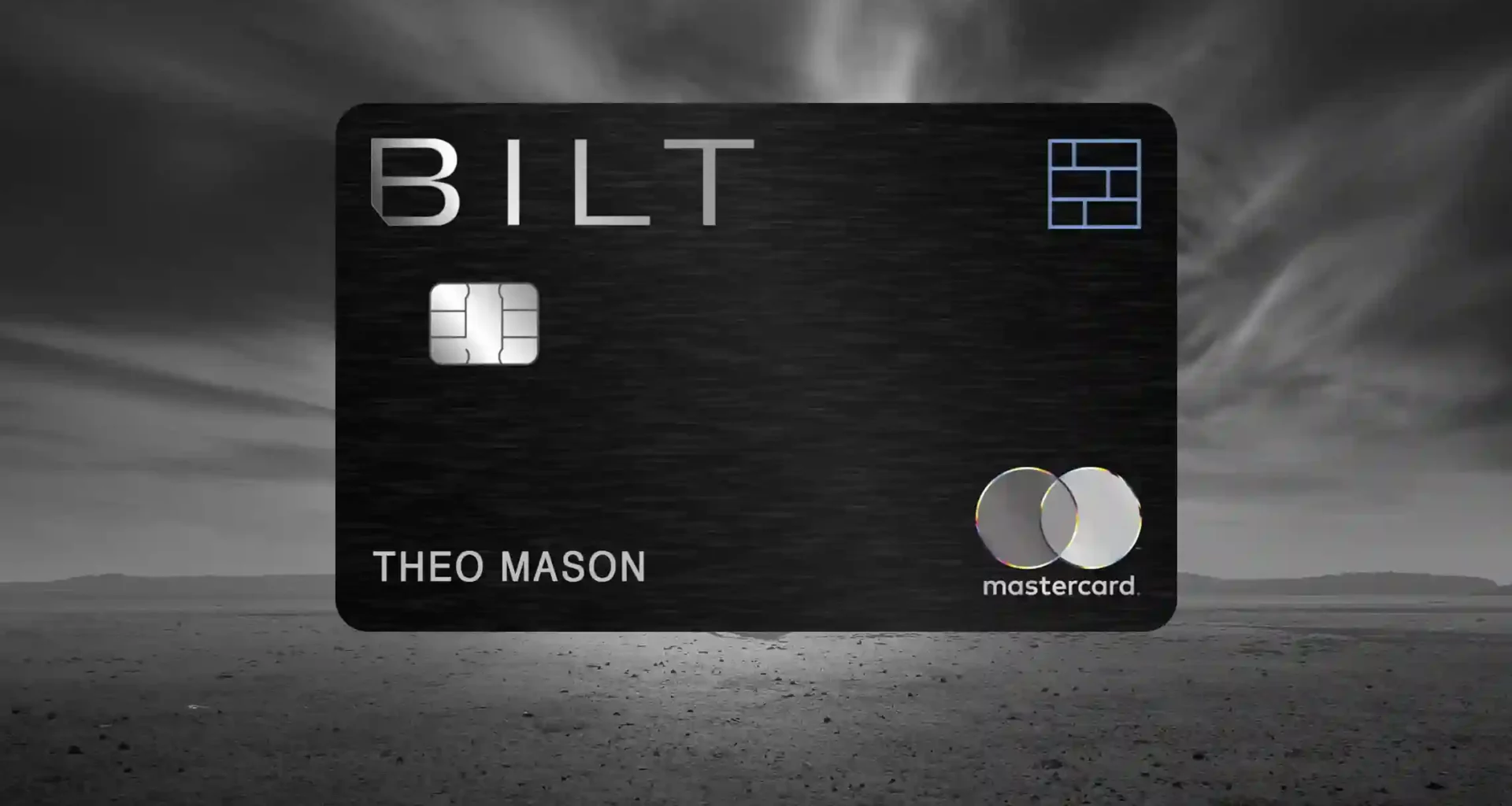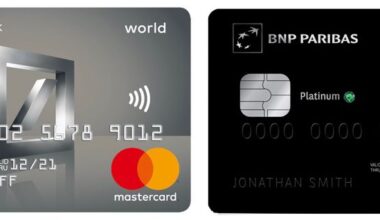Bilt has attracted attention for its unique approach to credit card rewards, offering points for rent payments and lucrative offers during its “Rent Day” promotions. On the surface, Bilt looks like a game-changer in the points world, promising to turn rent into transferable points.
In this article, I try to peel back the layers of Bilt’s business model to reveal a problem that may pose significant challenges to the company’s long-term viability. With shifting venture capital landscapes and a financially questionable product, how sustainable is Bilt’s business? Let’s dive into the numbers and find out.
Bilt’s business model
Like most credit cards, Bilt makes money through interchange fees, a processing fee merchants pay that typically totals around 2.2%. There are other ways that Bilt makes money–for example, on interest payments that it charges customers who maintain a balance on their cards–but interchange makes up the lion’s share of its revenue.
It’s also important to note that Bilt doesn’t make money on rent payments that cardholders make because rent payments are done via ACH and thus don’t involve any interchange. Bilt makes this clear on their website, reiterating that they don’t charge landlords.
Bilt spends a lot of money effectively buying the points it awards to customers for credit card and rent spend. I’ve spoken to airline and hotel awards programs in the past, and I think it’s safe to assume Bilt pays their partners (American Airlines, Hyatt, etc.) around one cent per point, on average. These economics mean that, for example, if I go to Target and spend $100 on my Bilt card (for which I earn one point per dollar), Bilt makes around $2.20 in interchange and gives me back around $1 worth of points (100 points worth $0.01 each). In many cases, they’ll award more points than this, specifically, two per dollar spent on travel and three points on dining.
Bilt’s problem
That’s an example of a profitable transaction. The trouble is, most transactions made on Bilt cards aren’t profitable because rent spend makes up most of the transactions that Bilt customers make–about 80%–and Bilt doesn’t earn interchange on rent spend.
What does all this mean for Bilt’s profitability? Well, if Bilt customers run $1 billion of charges on their cards in a given quarter, $800 million of that is rent and $200 million is regular card spend. Because of multipliers for specific spending categories, we can assume Bilt gives out, on average, around 2 points per dollar of credit card spend. That means that for every $1 billion of transactions, Bilt awards 1.2 billion points–400 million points for credit card spend and 800 million points for rent spend.
Assuming they buy points from partners for one cent apiece, these 1.2 billion points would cost them $12,000,000. But given they only earn interchange on $200 million of transactions, they’d only make $4,400,000 from all that spend (2.2% of $200 million). All this means that for every $1 billion of transactions Bilt cardholders run, Bilt loses around $7,600,000.
To put this another way, for every dollar Bilt customers spend, Bilt gives out six points, costing them 6 cents. In other words, Bilt is paying 6 cents in points for every 2.2 cents of revenue.
That’s pretty wild. And I’m using conservative estimates, so Bilt may be considerably less profitable than this.
How’s this possible?
How has a business that is fundamentally unprofitable achieved so much apparent success?
In the regular world, businesses need to make money to survive. Luckily for Bilt, it raised money from venture capital firms when startup valuations were stupidly stratospheric, and VCs were giving out cash like it was going out of fashion. VCs either didn’t notice or didn’t care that Bilt’s business is a lossmaker and decided to give them money anyway–money Bilt has used to give away billions of points to entice consumers to sign up for its card.
In all fairness to Bilt, there are plenty of examples of startups getting away with this. Uber is the best example: they gained market share by selling rides at a loss funded by billions of VC dollars before eventually raising prices and becoming profitable.
Unfortunately for Bilt, the funding landscape has shifted hugely, and unprofitable businesses are no longer all the rage. VCs are now paying attention to financials and aren’t funding fast-growing money losers like they used to be.
How can Bilt break even?
To solve its profitability problem without changing its rewards structure, Bilt would need to increase the proportion of credit card spend relative to rent. Specifically, it would need to get rent spend from 80% of transactions to around 17% of transactions. This is because:
- Bilt earns around $2.20 in interchange for every $100 credit card spend (2.2% of the transaction amount).
- Bilt earns $0 for every $100 in rent payments.
And:
- Bilt pays $2 worth of points for every $100 credit card spend (2% of the transaction amount).
- Bilt pays $1 worth of points for every $100 in rent payments (1% of the transaction amount).
So:
- Credit Card Spend: $2.20 (revenue) – $2 (cost) = $0.20 gain per $100
- Rent Payment: $0 (revenue) – $1 (cost) = $1 loss per $100
All this means that for every $100 of rent spend, Bilt needs $500 of credit card spend to break even.
Conclusion
The core value proposition of the Bilt card—earning points on rent—happens to be its Achilles heel: Bilt’s entire value to customers is that it allows them to earn points on rent, but doing so is highly unprofitable. At the same time, venture capital firms are becoming increasingly penny-wise and less interested in unprofitable startups.
Bilt does have routes to success. It could either maneuver to attract a higher percentage of regular credit card transactions (though I really don’t see much reason for consumers to put regular, non-rent card spend on Bilt cards) or try to alter the reward structure for rent payments. Either way, something fundamental has to change at Bilt to transform it into a sustainable operation.







19 comments
Well, nice explanation, but you forget about another income that is far above the swipe fees, Usually Banks earn around 60 percent of revenue on interest, whereas fees have about 15%, leaving swipe fees at 25% of the revenue makeup. Although we see Bilt has more credit card players and they are more “Savor” than average users, but Interest still takes a portion. According to the Fed, only about 42% of Americans pay their credit card balance in full. Even with the lowest interest-to-swipe fee ratio, American Express has 38% of Revenue on card users from Interest. Chase and Capital One have an even larger ratio of interest charges of a shocking 85% and 84%. This means that Bilt might have a interest to fee ratio of between 40%-80%. This could of cover most of the loss from swipe fees. Don’t forget that there are no signup bonus for this card unlike most other credit cards. Plus Bilt is also incentivizing people to have non rent spending on this card as there are perks like bonuses of Transfer Partners and Lounge Access depending on your status.
Came here from the funding round as well. All your logic makes a ton of sense. I’m curious where you found the assumption that 80% of spend is on rent – couldn’t find that stat anywhere.
Interesting read. Just came here from news that Bilt raised a fresh $200M yesterday.
Yeah, I saw that too. Either there’s something I’m missing here (which is entirely possible) or General Catalyst is in for a nasty surprise…
Any hypotheses on what you could be missing and how this could be possible?
The inter-change fees is also not entirely Bilt’s to keep, right? It must be shared bw Bilt, Mastercard and the issuer bank.
in your above example, it would mean they make 0 interchange on rent but still have to pay ~1-1.5% to Mastercard + the bank?
I’m not exactly sure of the breakdown, but generally, merchants (stores, hotels, airlines, etc) pay interchange fees to credit cards. Since rent transactions aren’t credit transactions (i.e. landlords aren’t paying interchange), Bilt wouldn’t be making any interchange, even though they have to pay out rewards on the transaction.
this is correct and a serious flaw the main article’s analysis. this actually means that the unit economics for bilt are much worse.
the only way bilt succeeds is via a land and expand model and / or interest fee’s
I don’t believe for a second that Bilt buys points for 1 cent. It has to be far lower. Amex values points at 0.6c when used to offset charges, which is likely their breakeven. Bilt surely pays upfront for points based DCF values. I can see something around 0.70cpp as a reasonable upfront DCF price. I suspect they’ll add an annual fee and some silly coupons once they get a large enough user base. Right now it’s all about customer aquisition. From what I’ve seen of their IT, they have their act together – app works flawlessly.
I’ve spoken with the folks in charge of Bilt’s rewards program and, believe it or not, they actually pay over 1 cent per point.
Yes. Read Gary Leff’s piece about how much card companies pay . You’d be surprised how much. Amex and others like Citi and Chase benefit from a long time lag as people hold on to points .
Gary also did a piece on BILT in which they insist they are profitable.
Glad you liked the piece! At the end of the day, only time will tell whether or not Bilt is the real deal.
The problem with increasing credit spend that isn’t rent is that aside from the 1st of the month that gets you 2x the normal points… the spending isn’t worth it… if I’m going to a restaurant on the first of the month… you bet I’m using a bilt card… but every other day it’s in my drawer.
Maybe if they have a thing where random days, they make it 2x so that you at least have to keep it in your pocket… or maybe pick one category and be the card to use for that… a 3x gas would be a decent one…
Even a 1.5x on everything else might be pretty good.
Most miles sell their miles to banks around 1.5 to 1.8 cent per mile. I work for a financial institution /credit card company.
Where is your data from? Or you making assumptions?
The pivot to mortgages seems like a one-time and long-term play, right? For example let’s say I got this card at 25 and rented for 5 years then got a mortgage at 30. They are losing money on me for a long time before making money on the mortgage. And they aren’t going to get me to refinance especially frequently. And this is anecdotal but I don’t see the same ‘stickiness’ of customers with mortgages. I, and everyone I know, just shopped around for the best deal when buying/refinancing. We weren’t particularly beholden to the bank we dealt with the most or whatever (even with the startup type banks like Ally or SoFi).
That said it seems Bilt is pulling back the official/unofficial welcome offer of 5x points for 5 days, and the September Rent Day deal is abysmal (free SoulCycle class or whatever? LOL) which may be a recognition that they can’t give out points (or transfer them to miles) like crazy.
Lots of open roles at Bilt currently so they still for now appear in a growth mode many VC backed companies are not at the moment. Their $150mn raise concluded in the fall of 2022 well into the decline of VC funding and valuation. They prob have more runway than most 2021 or 2020 era funded startups.
I believe the business case they make isn’t so much fixing the category mix, but taking these customers and getting them into mortgages as they graduate from rentals. A tough transition, but lucrative if pulled off. I share the skepticism unless Wells Fargo wants to make a loss leader of it and acquire them. Kind of like what Chase did with Reserve – huge loss leader in the name of future mortgage and investment relationships.
That’s super interesting–I hadn’t thought about the pivot to mortgages. I share your skepticism, but should also point out that startups have come back from much more significant losses in the past.
I don’t know much about the inner workings of these companies, but… apparently neither do you. I say this because you start every paragraph with “assuming.” Stop assuming, we all know the phrase. Everything in this article is pure speculation.
Let’s hope that Bilt DOES know what they’re doing, and IS profitable long term. It means a huge amount of points for many peoples’ largest expense.